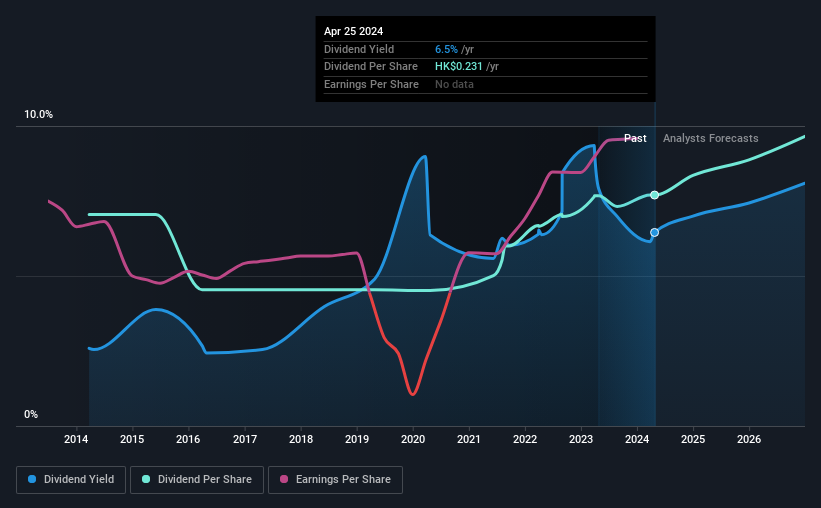First Pacific (HKG:142) Will Pay A Larger Dividend Than Last Year At $0.125

First Pacific Company Limited (HKG:142) has announced that it will be increasing its dividend from last year's comparable payment on the 4th of July to $0.125. Based on this payment, the dividend yield for the company will be 6.5%, which is fairly typical for the industry.
See our latest analysis for First Pacific
First Pacific Doesn't Earn Enough To Cover Its Payments
We aren't too impressed by dividend yields unless they can be sustained over time. However, prior to this announcement, First Pacific's dividend was comfortably covered by both cash flow and earnings. This means that most of its earnings are being retained to grow the business.
Earnings per share is forecast to rise by 43.8% over the next year. If the dividend continues on its recent course, the payout ratio in 12 months could be 136%, which is a bit high and could start applying pressure to the balance sheet.

Dividend Volatility
Although the company has a long dividend history, it has been cut at least once in the last 10 years. Since 2014, the annual payment back then was $0.027, compared to the most recent full-year payment of $0.0295. Its dividends have grown at less than 1% per annum over this time frame. We're glad to see the dividend has risen, but with a limited rate of growth and fluctuations in the payments the total shareholder return may be limited.
The Dividend Looks Likely To Grow
With a relatively unstable dividend, it's even more important to see if earnings per share is growing. First Pacific has impressed us by growing EPS at 31% per year over the past five years. Earnings per share is growing at a solid clip, and the payout ratio is low which we think is an ideal combination in a dividend stock as the company can quite easily raise the dividend in the future.
First Pacific Looks Like A Great Dividend Stock
In summary, it is always positive to see the dividend being increased, and we are particularly pleased with its overall sustainability. Earnings are easily covering distributions, and the company is generating plenty of cash. All in all, this checks a lot of the boxes we look for when choosing an income stock.
Companies possessing a stable dividend policy will likely enjoy greater investor interest than those suffering from a more inconsistent approach. However, there are other things to consider for investors when analysing stock performance. Just as an example, we've come across 2 warning signs for First Pacific you should be aware of, and 1 of them is a bit unpleasant. If you are a dividend investor, you might also want to look at our curated list of high yield dividend stocks.
New: AI Stock Screener & Alerts
Our new AI Stock Screener scans the market every day to uncover opportunities.
• Dividend Powerhouses (3%+ Yield)
• Undervalued Small Caps with Insider Buying
• High growth Tech and AI Companies
Or build your own from over 50 metrics.
Have feedback on this article? Concerned about the content? Get in touch with us directly. Alternatively, email editorial-team (at) simplywallst.com.
This article by Simply Wall St is general in nature. We provide commentary based on historical data and analyst forecasts only using an unbiased methodology and our articles are not intended to be financial advice. It does not constitute a recommendation to buy or sell any stock, and does not take account of your objectives, or your financial situation. We aim to bring you long-term focused analysis driven by fundamental data. Note that our analysis may not factor in the latest price-sensitive company announcements or qualitative material. Simply Wall St has no position in any stocks mentioned.
About SEHK:142
First Pacific
An investment holding company, engages in the consumer food products, telecommunications, infrastructure, and natural resources businesses in the Philippines, Indonesia, Singapore, the Middle East, Africa, and internationally.
Undervalued with proven track record and pays a dividend.
Market Insights
Community Narratives



